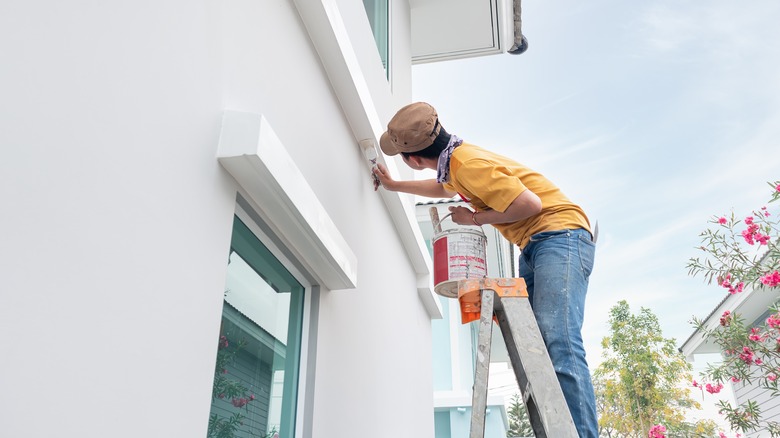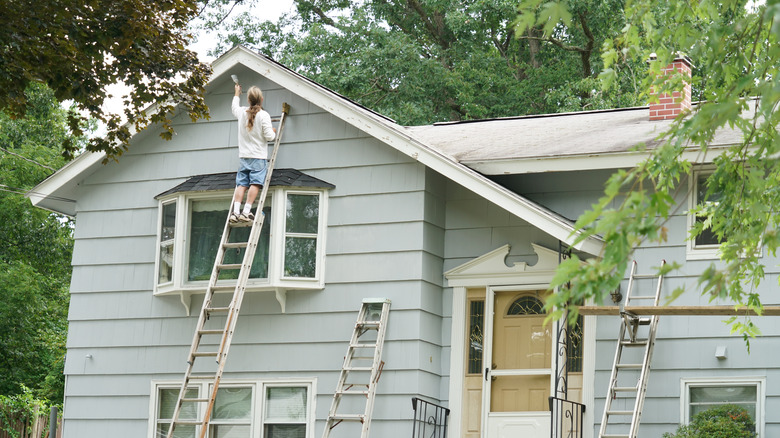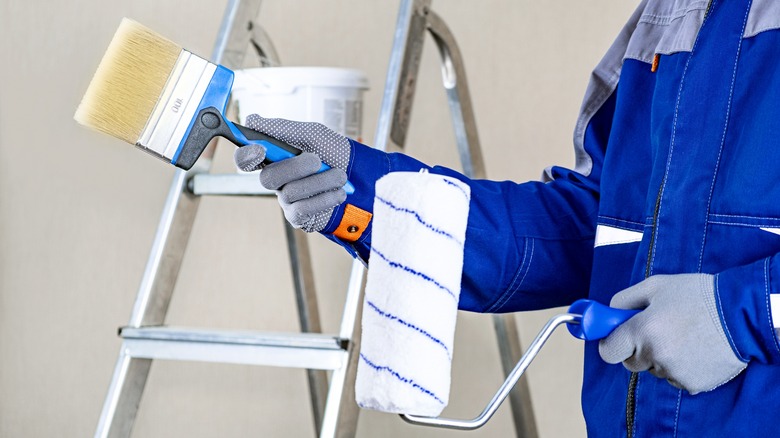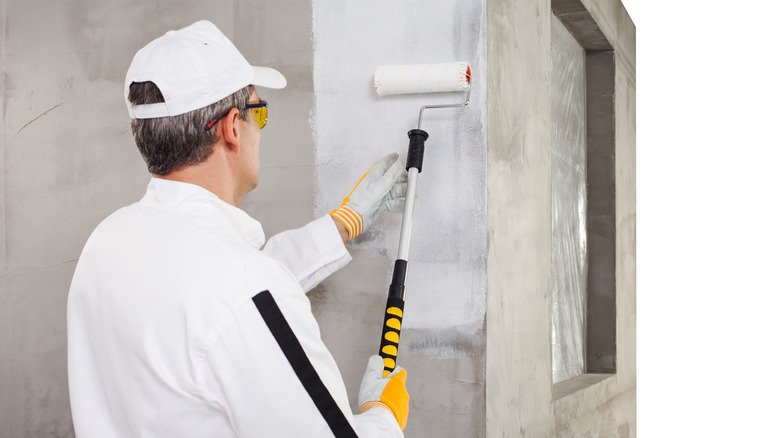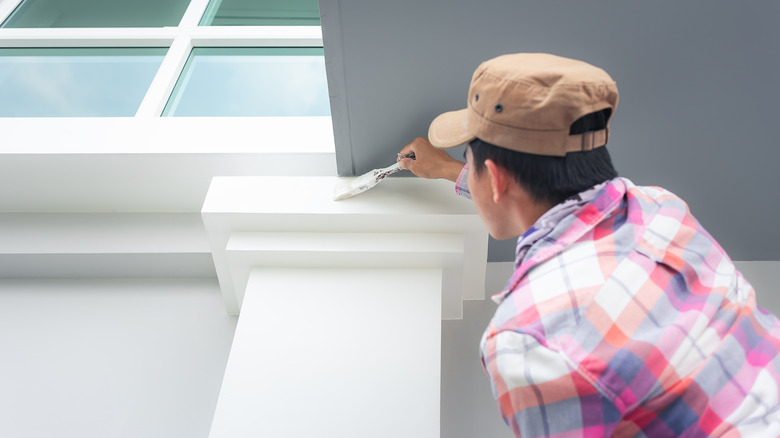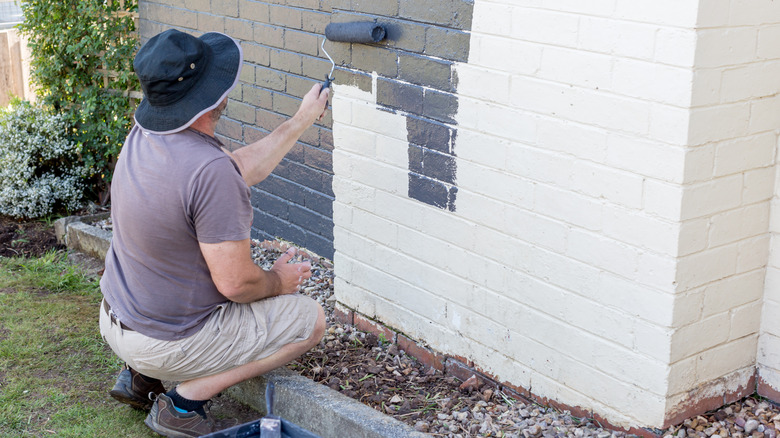5 Tips For Painting The Exterior Of Your Home Like A Pro
A proper paint job to the home exterior does more than increase the curb appeal. Updating the outer coat of paint helps protect the wall from weather elements, not to mention taking the house value a notch higher. However, coloring the exterior of the wall requires some preparation before plunging ahead. There is no doubt that this is a huge task; however, it is one of those projects that you can easily pull off with a little preparation, the right tools, and also a few handy skills. Depending on the size of your house, the initial cost of the equipment and materials needed can be quite substantial.
However, calling a professional for the task will be even more expensive, ranging from $1.50 to $3.50 per square foot, according to Nelson J. Greer. It is also worth mentioning that while you might save a good amount of money, you must be committed to the project. Having all the tools does not guarantee a well-done paint job. You will need some practice if you have never painted a wall before. So how do you pull off a professional-grade paint job to your house's exterior? Well, this article will give you a few pointers to help you achieve a professional-looking finish. Let's get right in!
Pick the right paint
A lot goes into the paint selection process other than the color; you must remember that the pigment you choose needs to protect the walls from weather elements. First, when it comes to the paint color, you need to remember that the exterior is the first impression visitors have of your home, and you want it to leave the right impression.
Begin by looking around the neighborhood for some inspiration; don't go for paintings that are too loud that they overshadow the area's architectural designs. You also don't want paint color that is too dull, making your house unappealing and almost invisible. Once you narrow down on a few hues that you like, buy a few samples and paint over a large foam piece just to have a feel at how they would look on your walls. Then, select the sliding paints separately from the other pieces of the façade. Also, you need to consider how the hue will look against other parts of the house that you won't paint, like the roof.
According to Sherwin-Williams, the two major types of exterior wall paints include oil-based and latex based. Latex-based paints dry quickly and are easier to apply. Finally, Sharper Impressions Painting advises that a semi-gloss finish will protect your walls from elements like sun rays and moisture.
Prep the walls
While it may seem not as important, the quality of wall preparation before painting is often the difference between a professional and a DIY paint job. Proper wall preparation will save you money and time. Remember, for the paint to adhere, the surface must be completely dry and free from flaking or peeling. Cleaning the walls also removes mildew that thrives under fresh pigment and often causes it not to adhere. Finally, cleaning the walls involves washing off any scum, dirt, and other debris.
Use an all-purpose scrubbing brush with some soap and water; how much you will need to scrub the walls will depend on their current condition. You will also need to scrape the exteriors to remove any existing paint that is peeling off. While scraping, remember not to remove all the preexisting paint; the idea is to achieve a smooth surface for the new coat of paint.
ArtRadarJournal says the average cost of prepping an 800 square foot of wall for paint is around $400. This is an option that you can consider if you need some help cleaning the exterior. Finally, fill up any cracks to get a good seal and sand down the spots till smooth.
Don't skip priming
Priming the exterior walls before painting is necessary; it is part of the preparation process that lays the foundation for the final coat of paint. Primers expose any blemishes on the wall, especially near windows and doors where you might have missed to caulk. What's more, modern primers also provide additional protection against harmful UV rays and block stains. Failing to apply a coat of primer to the exterior walls will leave the job looking mediocre, not meeting the standards you would like.
Fortunately, primers dry up faster compared to paint, hence not consuming a lot of your time. Indigo Paints mentions that the primary purpose of this coat is to create a canvas where the final coat will adhere. Therefore, you need to pick the best primers for the specific type of paint you are applying to your walls. For example, latex-based primers are ideal for painting over wood or over previous latex paint. However, oil-based ones are ideal for painting over preexisting oil-based paint.
Timing is everything
Extreme weather elements have a lot to do with how your paint job will turn out. Before plunging ahead, you must consult the weather forecast. The weather will determine how the paint dries, ultimately determining your finish's quality. Ideally, the best weather for exterior wall painting is when it is warm and dry outside. Hot temperatures, especially under direct sunlight, cause paint to dry too first. On the other hand, extreme cold prevents the coating from adhering properly and might even cause bubbling.
You should also be aware that acute fluctuations in temperatures during the day and night also affect how the paint dries and turns out. For example, if it rains, you need to give the wall siding enough time to dry out completely. So what is the best season to paint your house exterior? According to PaintRite Pros, dry conditions and relatively warm temperatures are ideal for paint application and drying. Therefore, it is wise and advisable to schedule your paint job during summer for a perfect finish and long-lasting outcome.
Use the right painting techniques
Use the right techniques, especially if you are planning to paint the exterior walls yourself. It is safer to use tried and tested methods than to go for other approaches that will not produce the best results. One important rule of thumb you should stick with whenever you are painting is to start from the top. This will help prevent paint drops from getting to the newly painted surfaces spoiling the appearance. Also, consider using a paint sprayer instead of a paintbrush that will take ages to complete.
However, if you choose to use a paint sprayer, you need to go over the surfaces using a brush or a roller for uniform coverage. According to Architectural Digest, hand rolling after spraying gives the wall surface some texture that would otherwise be sterile. The grainy appearance of a roller also helps the wall absorb light. It is a good practice to always apply two coats of paint as well. As per Sharper Impression Painting, the first coat of paint is absorbed into the wall surface, while the second coat ensures the application is uniform and completely conceals the existing paint. Finally, always remember to check for missed and uneven spots before calling it a day.
